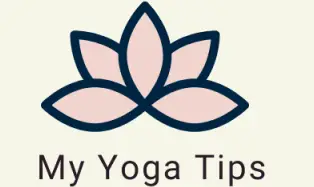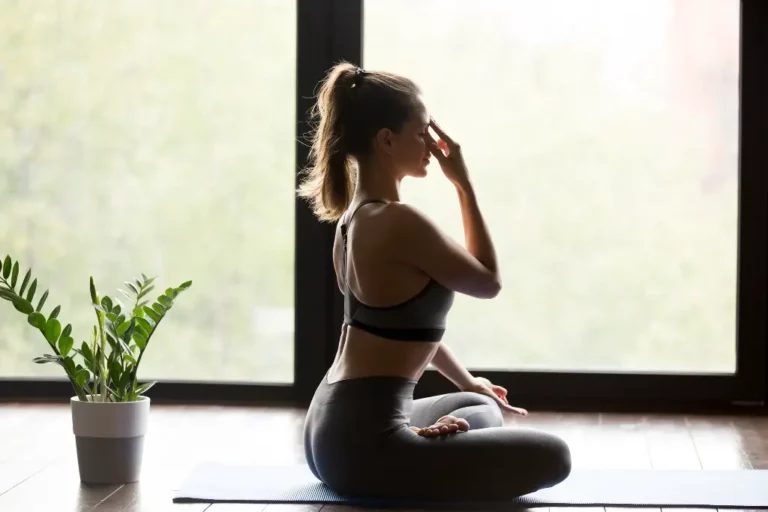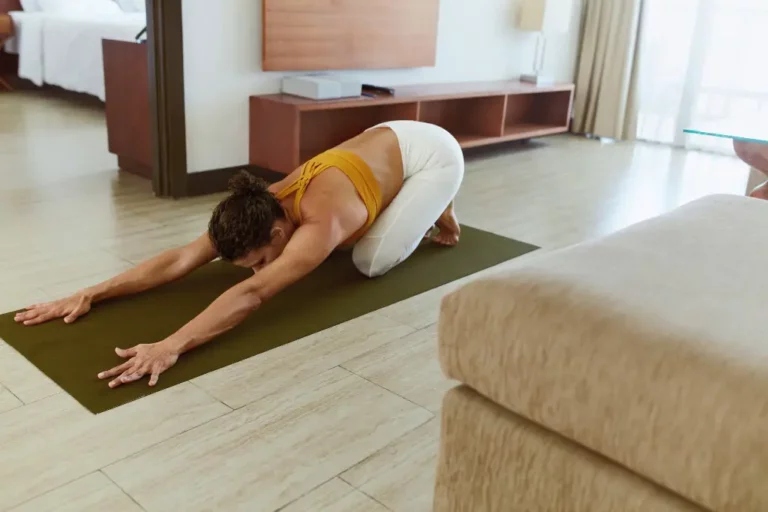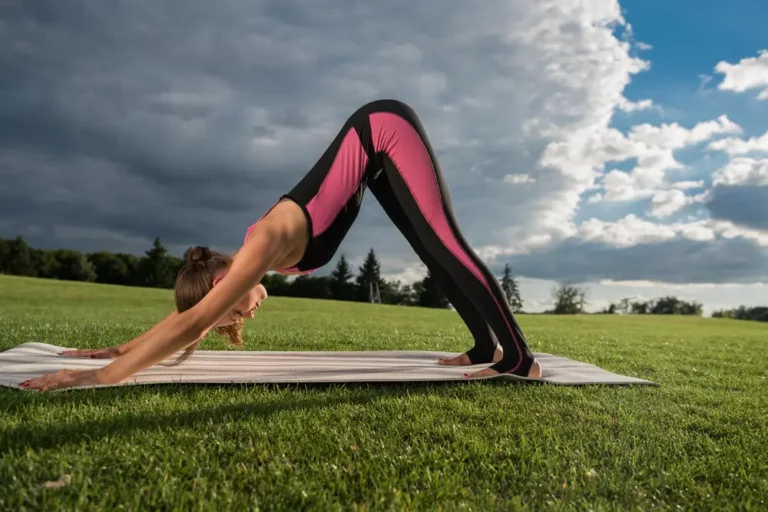Are 15 Minutes Of Yoga A Day Enough?
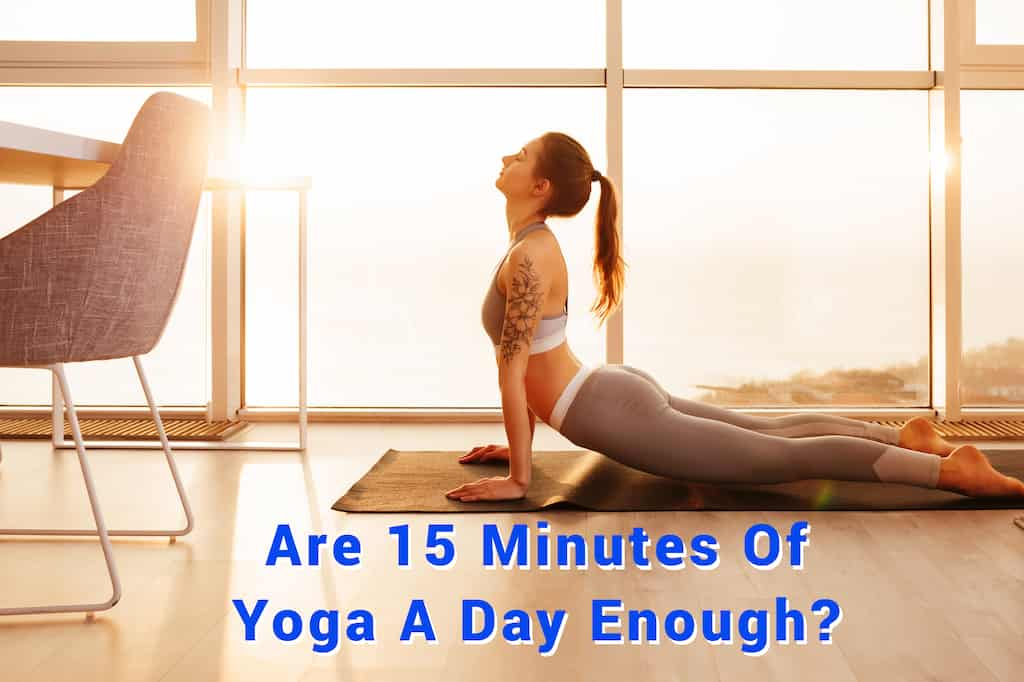
I always used the excuse of never having enough time to get some exercise into my daily life. The truth is you don’t need hours to start enjoying the benefits of exercise. Doing 15 minutes of yoga is better than doing nothing at all. It creates a habit-forming routine that you will harvest the fruits of.
A daily recommended exercise routine of 15 minutes of yoga, be it morning or afternoon, can help to improve and rewire many different aspects of your mind and body.Most yoga sessions are classified as light to moderate aerobic workouts ranging from 3 to 6 METs.
Regardless of your age, schedule, or body type, yoga can have more benefits than just losing some weight or increasing your fitness. Everyone can reap the rewards of yoga. The trick is to get started and plan your workout to get the full benefit of your short 15-minute workout.
Are 15 Minutes Of Yoga A Day Enough?
Exercise in our daily lives carries many benefits. Although studies have shown that the beneficial amount of activity needed per day is 30 minutes for adults. Adding even just 15 minutes a day can considerably impact your body.
The point is to start getting active, and 15 minutes allows you to form a habit where you can see and feel the benefits of being more physically active.
People generally give up if things get too difficult and time-consuming. The key here is to use those 15 minutes accurately to make every minute count in your favor. Again, consistency is more important than intensity.
How 15 Minutes Of Yoga Can Benefit You
Whether you have 15 minutes or an hour to enjoy the benefits of yoga, each minute you spend on yoga poses will give you the same benefits.
Here are the benefits you can enjoy when you start to get active and get into the routine of yoga exercises.
- Increases flexibility and mobility
- Builds strength
- Corrects your posture
- Improves your health
- Helps to lose weight
- Improves mindfulness
- Increases concentration abilities
- Enhances the mind and body connection
- Improves energy
- Helps reduce levels of stress and anxiety
- Promotes restful sleep
- Improves your breathing
- Decreases inflammation
- Boost your mood
The Different Yoga Categories
Yoga has a vast and interesting history, with different takes on the form of yoga depending on cultural and religious beliefs. But some common yoga categories are practiced worldwide, focusing on various aspects of the body. At the same time, some have been combined to create a complete mind, body, and soul workout.
- Vinyasa uses an athletic flow that is more advanced
- Hatha is a slower-paced yoga that is aimed at beginners
- Iyengar, this yoga form focuses on holding poses for longer, aiming for precision and correcting the alignment of the posture
- Kundalini is a spiritual and mental yoga that helps set mantras and breathwork
- Ashtanga follows a set of sequence poses, such as sun salutations, to help increase the intensity of standing poses and floor moves
- Bikram is performed in a heated room and consists of 26 different aerobic poses that are aimed at loosening muscles and detoxification
- Yin is a slow-paced yoga often performed in a seated position focusing on deep stretching
- Restorative is a very relaxing yoga that helps the body and mind unwind through long, slow, and relaxing poses
- Anusara, similar to Hatha with its slow-paced poses, aims at increasing positivity and opening the heart chakras
- Pranayama is the art of teaching students how to regulate their breathing
- Sivananda is more focused on spiritual yoga
Four levels of yoga accommodate all levels of fitness for people starting out to those yoga enthusiasts. Here is what you can expect from each level.
Beginner-Level 1is perfect for anyone who is still getting familiar with yoga. It allows you to take it easy, learn the different poses, and learn how far they can push your body.
- Slow Pace
- Clear instructions for poses
- Let’s explore your limitations
- Teaches basic poses
Experienced Beginner – Level 2 is ideal for people with a basic knowledge of yoga or if you are unfit and need to get back into motion.
- It’s a slightly faster pace.
- Poses are built on the basic learning of level 1
- Introduces hand madras and pranayama
- Introduces more challenging variations of basic poses
Intermediate – Level 3 when your fitness increases and you are ready for a faster pace and more of a challenge, then level 3 is waiting for you.
- Much faster pace
- Poses are more challenging
- Introduces inversion and arm balances
- Focuses on deeper breathing techniques
- Allows you to mindfully push your boundary limits
Advanced – Level 4, this level is not for the faint-hearted. If you thought yoga was just a slow-paced and relaxing exercise, then this level will give you a good sweat.
- Very fast-paced
- Highly challenging poses
- Builds up your flexibility and strength
- At this level, you learn how to control breathing for more extended periods.
- Introduces visualization methods and setting intentions
Why Yoga Is Such A Good Form Of Exercise
Not everyone is geared at high-intensity workouts or running. Take it from me, I have tried several different ways of training, and yoga always seems to be my old faithful.
Anyone can start doing yoga. For those that are super unfit, overweight, or stiff as a plank, there is a stage for everyone. Once you start getting into the movements, you can push your boundaries further every time, increasing your reach and flexibility.
Just 15 minutes a day will start forming a habit that gets your body active. It will help increase blood flow, build core muscles, and improve flexibility, making you more mindful of your body and mind.
Another great reason why yoga is an excellent form of exercise is it releases feel-good hormones in the brain’s chemistry.
- Serotonin helps balance out moods, promoting a feeling of well-being
- Endorphins are the body’s natural painkillers that help with pain management in the body
- Dopamine is the hormone responsible for that feel-good emotion making you feel happy
Yoga allows you to work with your body’s limitations, and you decide how far to push yourself without hurting or jarring your joints.
Read my guide 6 Ways To Make Your Yoga Routine Actually Stick
Breaking Down Your Yoga Workout
Suppose you’re pressed for time because of your hectic schedule, and you have 15 minutes to get a quick daily dose of exercise. In that case, you need to ensure you use your time correctly to get the full benefits of the routine.
Like with any exercise, you need a warm-up and cool-down period.
Warm-up 5 Minutes
Break this section into two parts. Set your intentions and breathing control.
Set Your Intentions For The First 2 Minutes
Closing your eyes focus on your body and mind, how you feel and what you need. Are you tense or anxious? Do you want to feel more relaxed or grounded?
Focusing on your mind and body’s physical state and what you want to achieve out of your session will help you set the tone for the rest of your day.
Regulate Your Breathing For The Next 3 Minutes
While seated, consider your posture and regulate your breathing by breathing in and out through your nostrils.
Start with a 3 count in and 3 count out, and increase the count to five if you feel comfortable doing so.
Yoga Routine For 8 Minutes
Start with your routine of yoga poses or a sequence you are comfortable with. Poses can be easy and streamlined to more intense and fast-paced, depending on your level and ability.
Cool Down For 2 Minutes
Use the last 2 minutes to get into a few stretches and enjoy a quick meditation to relax and bring your heart rate back down.
Conclusion
Yoga is increasingly becoming popular worldwide and has multiple benefits that help people physically and mentally. Even if you don’t have a lot of time, 15 minutes a day can help you produce results that increase flexibility and reduce pain while also improving your state of mind and mood.
